![]()
the Nabucco pipeline (2011)
the North European Gas Pipeline (2010)
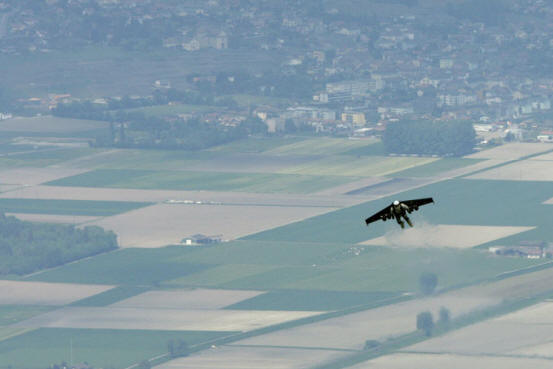
Yves Rossy (May 14, 2008) flew his jet engine-powered wing in the first public demonstration before the world's press
the Iranian Oil Bourse (February 2008)

the Airbus A380 (October 25, 2007) went into service
the Forsmark incident (2006)
Arcelor Mittal (2006)
Structural construction on the Three Gorges Dam (May 20, 2006) was finished.
The largest hydroelectric dam in the world is expected to become fully operational in 2009

Evo Morales (May 1, 2006) announced that that all natural gas reserves in the country will be nationalized.
Foreign energy companies were given a six month "transition period" to re-negotiate contracts, or face expulsion
Vivian Alberts of the University of Johannesburg (Febuary 11, 2006)
anounced a breakthrough in solar panel technology

the Hertfordshire Oil Storage Terminal fire (December 11-13, 2005)
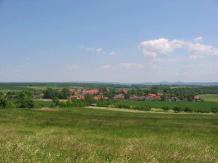
das Dorf Jühnde bei Göttingen
(27. September 2005) stellte als erste
Gemeinde in Deutschland seine Strom- und Wärmeversorgung auf Bioenergie um
Chevron merged with Unocal (August 10, 2005) after the
company dropped the Texaco moniker on May 9, 2005
the Baku-Tbilisi-Ceyhan pipeline (May 25, 2005)
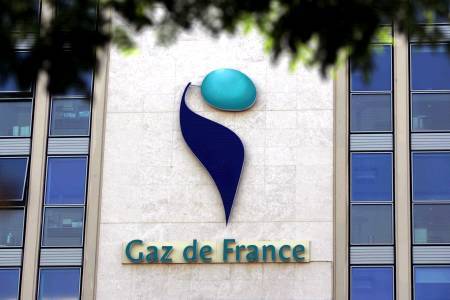
Gaz de France (2005) was privatized
the Russia-Ukraine gas dispute (March 2005)
Oil price increases of 2004-2006
gizmag (2004)
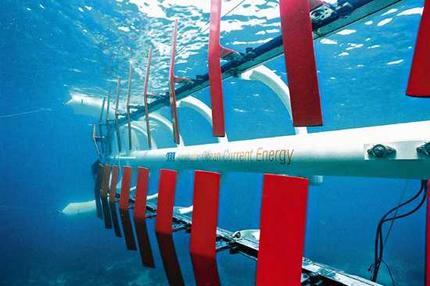
the aquanator (2003)
the Italy blackout (September 28, 2003)

the Gibbs Aquada (September 3, 2003)

the North America blackout (August 14, 2003)
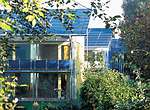
Solarsiedlung Freiburg (2003)
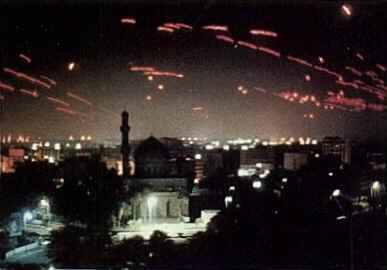
invasion of Iraq (March 20, 2003)

the Trans-Afghanistan Pipeline (December 27, 2002)
quantum teleportation (June 2002)
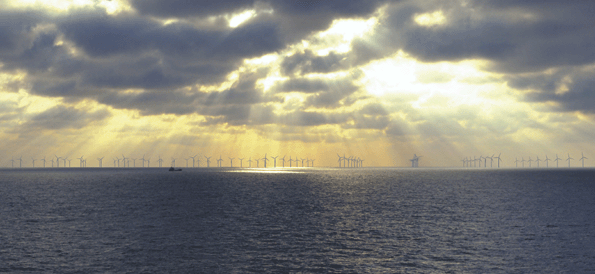
the world`s largest offshore windfarm (2002) was installed at Horns Rev, Denmark

ZPEnergy (2002)
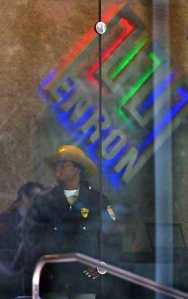
Enron went bankrupt (December 2, 2001)
Chevron merged with Texaco (October 9, 2001) to form ChevronTexaco
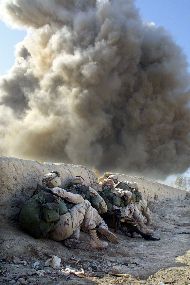
the United States invaded Afghanistan (October 7, 2001)
as part of the Operation Enduring Freedom
the newly merged company bp amco dropped amco from the corporate name (2001)
and started using the initials bp for "beyond petroleum" in advertisements
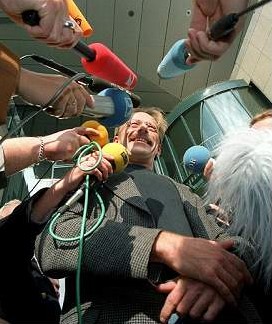
Germany (June 16, 2000) determined to stop producing energy in nuclear
power plants by the year 2020, in favour of developing renewable energy sources
E.ON (June 16, 2000)
das Erneuerbare-Energien-Gesetz (29. März 2000)

the California electricity crisis (2000-2001)
Operation Merlin (February 2000)
the California Fuel Cell Partnership (2000)
Exxon and Mobil (November 30, 1999) became ExxonMobil
Daimler-Benz and Chrysler (November 12, 1998) became DaimlerChrysler
British Petroleum (August 1998) merged with the American Oil Company (Amoco), forming "BP Amoco"
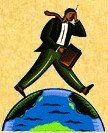
the dot-com frenzy (1998)
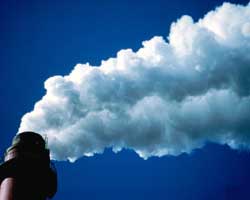
the Kyoto Protocol (December 1997) was negotiated in Kyoto, Japan. It was opened for signature on March 16,
1998. The agreement came into force on February 16, 2005 following ratification by Russia on November 18, 2004
the first supersonic land speed record (October 15, 1997) was set at the Black Rock Desert in the U.S.
Andy Green of the United Kingdom, drving the ThrustSSC Turbofan jet car hit 763.035 mph (1,227.99 km/h)
the Asian financial crisis (1997)
the Toyota Prius (1997)
Sizewell B (June 1995) the first pressurized-water nuclear reactor in the United Kingdom
and the most advanced nuclear power station in the world, began operating in Suffolk, England
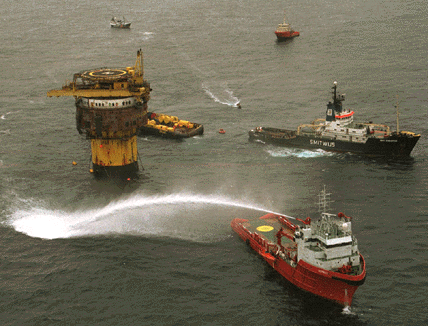
the battle of Brent Spar (April 30 - July, 1995)
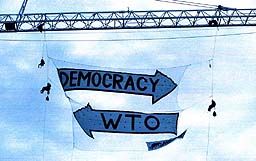
the WTO (January 1, 1995) was
created to replace the General Agreement on Tariffs
and Trade (GATT), a series of post-war trade treaties intended to facilitate
free trade
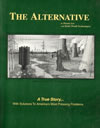
the Alternative: A True Story...with Solutions to America's Most Pressing Problems (1994) by Dennis Lee
Hélimax (1994)
FTAA (1994)
the World Energy Council (1993)
the US congress canceled (1993) the Superconducting Super Collider project
Oil and Natural Gas Corporation of India (June 23, 1993)
.jpg)
Yukos Oil Company (April 15, 1993 - December 2004)
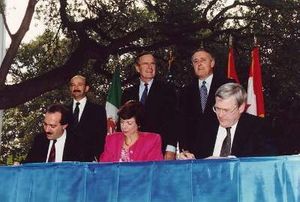
the North American Free Trade Agreement, known usually as NAFTA (October 1992) among Canada, the United
States, and Mexico, was initialed by the heads of state and their secretaries. It went into effect on January 1, 1994
the Prize: The Epic Quest for Oil, Money, and Power (1992) by Daniel Yergin
xenon headlamps (1991)
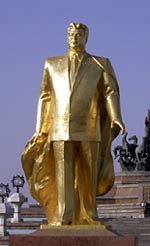
Saparmurat Niyazov, as leader of the Turkmen SSR (1991) supported the coup against
Mikhail Gorbachev and retained control of Turkmenistan after the fall of the Soviet Union

the Persian Gulf war (August 2, 1990 - February 27, 1991)
the American Solar Challenge (1990)
the GM Impact (1990)
the International Nuclear Event Scale
large and undeveloped oil fields (1989) were discovered around and under the Caspian Sea
Stanley Meyer was granted patents (1989) for his water fuel cell

Gazprom (1989)
the Exxon Valdez oil spill (March 24, 1989)
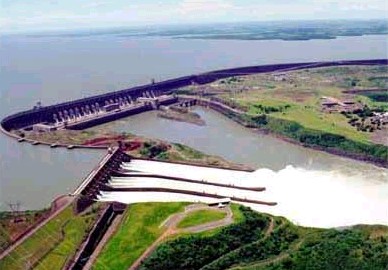
the Itaipu Dam (1989)
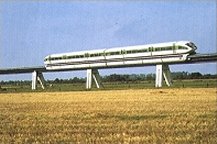
a Transrapid train (1989) reached the record-breaking speed of 436 kilometers per hour
China National Petroleum Corporation (September 17, 1988)
the World Solar Challenge (1987)
Black Monday (October 19, 1987)
the Canada-U.S. Free Trade Agreement (1987)
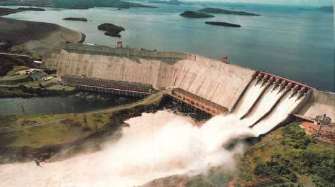
the Guri Dam (1986) started operation in Venezuela to supply 10,000 megawatts of electricity per hour
Dry cask storage (1986)
the US Strategic Petroleum Reserve (June 1, 1986) reached the half billion barrel mark
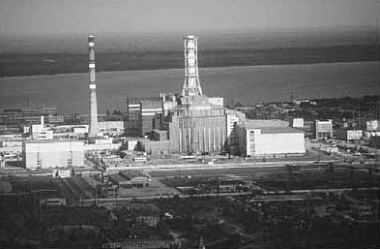
the Chernobyl accident (1986)
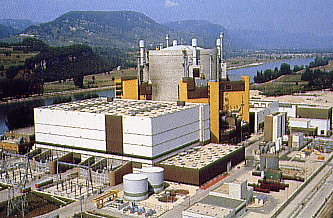
the Superphénix (1985-1992)

the Hutchison effect (1980s)
the Becquerel (1985) officially replaced the Curie as the unit used for measuring radioactivity

Luz (1985-1992) in the Mojave desert
Enron (1985)

ITER (1985)

the Bhopal gas leak (1984)

the merger of Standard Oil Co. of California (Socal) and Gulf Oil Corp. (1984) was the largest
merger in U.S. history at the time, nearly doubling Socal's worldwide proved oil and gas reserves.
The merged company became Chevron Corp.

Solar thermal energy (1980s)

the core networking protocol of ARPANET (January 1, 1983) was changed
from NCP to TCP/IP, marking the start of the Internet as we know it today
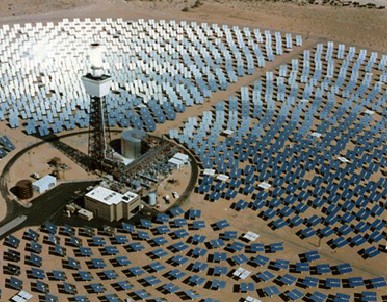
solar one (1982)
compact fluorescent lamps (early 1980s)
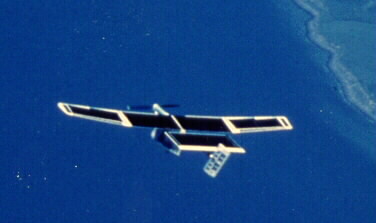
the Solar Challenger (1981) became the first solar-powered airplane to complete a crossing of the English Channel
Space Shuttle Columbia (1981-2003)
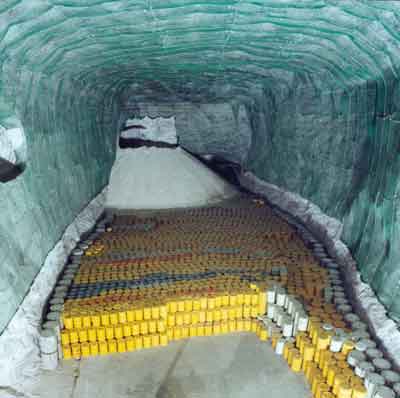
Deep geological repositories (1980s)
Sweden (1980) determined to stop producing energy in
nuclear power plants in favour of using wind energy
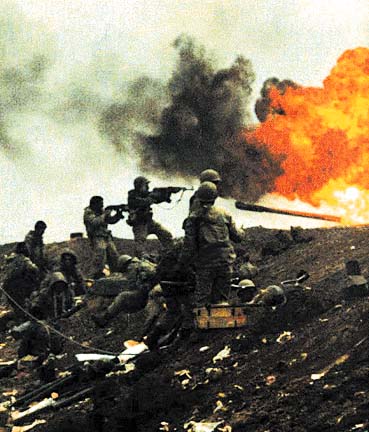
the origins of the Iran-Iraq war (1980-1988) go back to the
question of sovereignty over the resource-rich province of Khuzestan
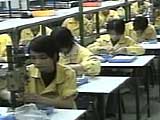
Special Economic Zones (1980s)
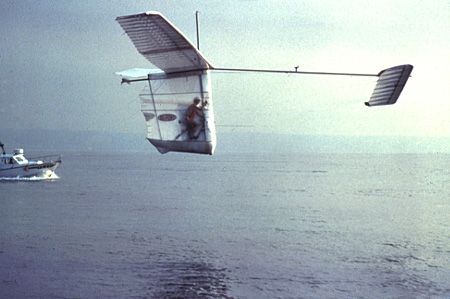
the Gossamer Albatross, a human-powered aircraft (June 12, 1979) completed a successful crossing of the English Channel
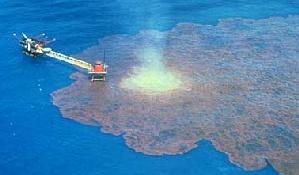
the Ixtoc oil-well blowout in the Gulf of Mexico (June 3, 1979)
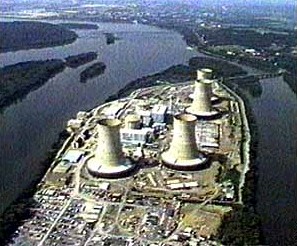
the Three Mile Island nuclear accident (March 28, 1979)

with the Soviet invasion of Afghanistan (1979-1989) the Great "Game"
between the British
and the Russian Empire for supremacy in Central Asia was continued, after the
first and second
Anglo Afghan wars (1839-1842 and 1878-1879), now with involvement form the
United States
who supported Mujahideen forces like the Taliban to create an anti-Soviet
resistance
the Solar Energy Research Institute (1977) changed its name to "the National Renewable Energy Laboratory"

the United States Department of Energy (August 4, 1977)

the Alaska Pipeline (May 31, 1977)

the Seveso disaster (July 1, 1976)

the Grameen Bank (1976)

Sunbeds were invented (1975) by Friedrich Wolff
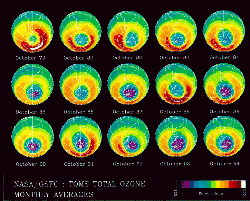
Ozone depletion (1975 - present)

the Group of Six (1975)
Petróleos de Venezuela (1975)
the Nuclear Suppliers Group (1975)

the use of microwave ovens (1970s) became widespread in Japan and the US
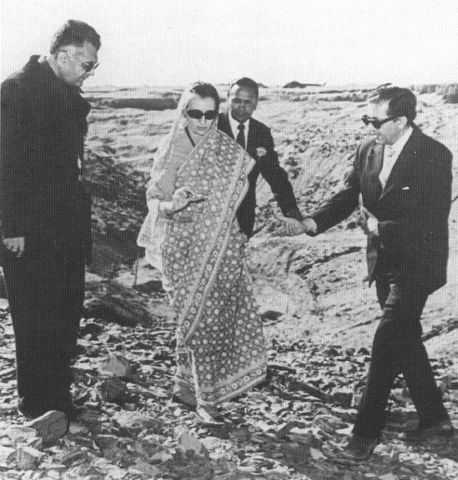
India (1974) tested "Smiling Buddha"
the International Energy Agency (1974)

the world oil shock (October 1973)
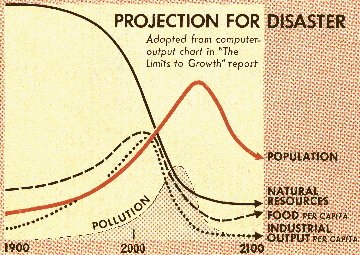
Limits to Growth was a (1972) book modeling the consequences of a
rapidly growing world population, commissioned by the Club of Rome
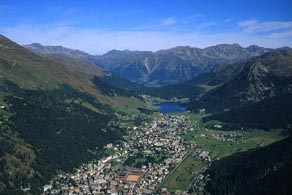
the World Economic Forum (1971)

Greenpeace (1971)

the Boeing 747 (January 22, 1970) had its first commercial flight
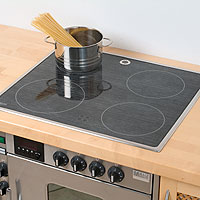
Imperial erfand das Ceran-Kochfeld (1970) in Zusammenarbeit mit den Schott Glaswerken
the Aswan High Dam (1970)

the U.S. Apollo program (July 20, 1969) sent twelve men to land on the Moon
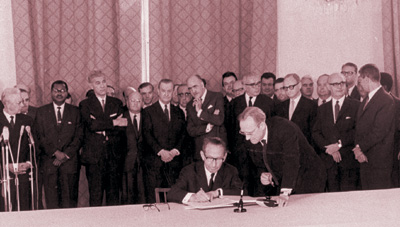
the Nuclear Non-Proliferation Treaty (July 1, 1968)
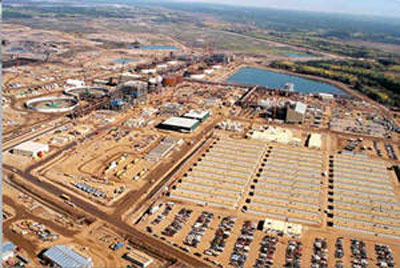
Great Canadian Oil Sands (now Suncor) opened its first mine (1967) producing oil from the Athabasca oil sands

the first tidal power station (1966) opened at La Rance, France
the digital revolution (1965-present)

Roger E. Billings (1965) designed a way to use hydrogen as a fuel to power a Ford Model A, as a high school science project

the United Nations Conference on Trade and Development (December 30, 1964)
the Partial Test Ban Treaty (1963) prohibits atmospheric testing of nuclear weapons

the Testatika (1960s)

Wal-Mart (1962)

OPEC (1961)
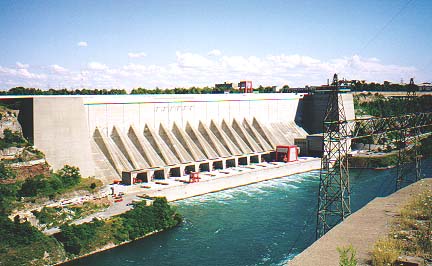
the Robert Moses Niagara Hydro-Electric Power Station (1961)
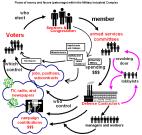
the Military-industrial complex (1961)
the International Development Association (1960)
the first working laser was made (1960) by Theodore H. Maiman.
The term was laser itself was coined in 1959 by Gordon Gould
France (1960) tested "Gerboise Bleue"

the loss of tropical rain forest (1960 - present) continues to progress
the 11th CGPM named the International System of Units (1960)
abbreviated SI from the French name: Le Système International d'Unités
the Indian Oil Corporation (1959)

the Campaign for Nuclear Disarmament (1958)

Sputnik 1 (October 4, 1957) was the first artificial satellite to be
put into orbit. The launch led to the beginning of the space race
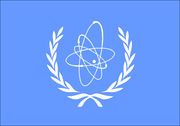
the International Atomic Energy Agency (July 29, 1957)

the European Community (March 25, 1957) merged the European Coal and Steel Community (ECSC),
the European Economic Community (EEC), and the European Atomic Energy Community (Euratom)
under a single institutional framework with the Merger Treaty in 1967

Euratom (1957)
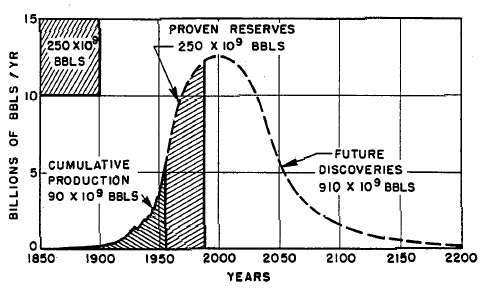
the peak oil theory (1956)

International Finance Corporation (1956)
the Fortune 500 (1955)

Auto rickshaws (1950s)

the world's first nuclear power plant for a practical commercial purpose (June 27, 1954)
began operations at Obninsk, Kaluga Oblast, Russia

CERN (1954)
CNC machines (1950s)
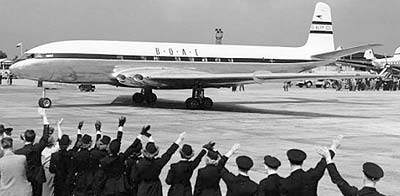
the first passenger flight on a jet airliner (May 2, 1952) was from London Heathrow Airport to Johannesburg
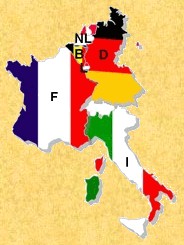
the European Coal and Steel Community (April 18, 1951)
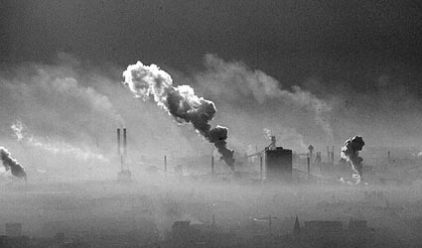
Global dimming (1950s-present)
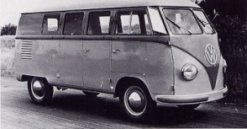
Volkswagen Type 2 (1950)
the Transistor (December 1947) was invented at Bell Telephone Laboratories
by John Bardeen, Walter Houser Brattain, and William Bradford Shockley
the Bell X1 became the first aircraft to break through the sound barrier (October 14, 1947)
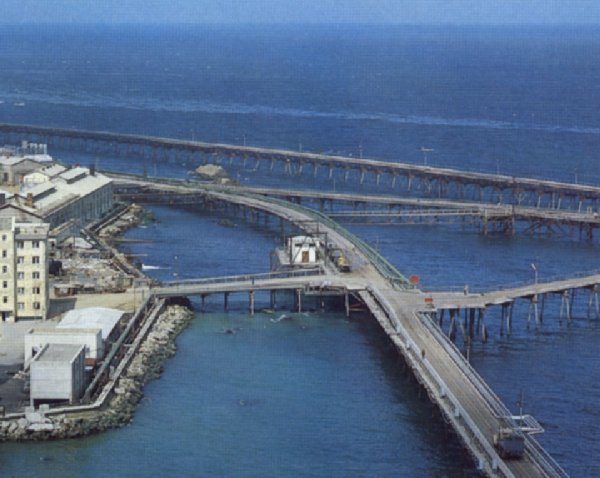
the Oil Rocks on the Caspian Sea (1947) was the first oil platform in the world
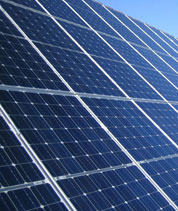
the modern solar cell (1946) was patented by Russell Ohl
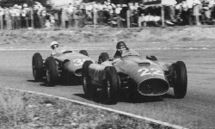
the Formula One (1946)
the United Nations Atomic Energy Commission (January 24, 1946)

the correct formulation and proof of the uncertainty relation (1945) between
energy and time were suggested by L. I. Mandelshtam and I. E. Tamm

Hiroshima (August 6, 1945)
and Nagasaki, Japan, were destroyed by atomic bombs dropped by the United
States military on August 6 and August 9, 1945, respectively, killing at least
100,000 civilians outright and many
more over time. The bombs, secretly developed by the United States (with
assistance from the United Kingdom
and Canada) under the codename Manhattan Project, were the second and third
atomic devices to be detonated,
and are the only ones ever used as weapons, rather than for testing purposes.
The first nuclear test explosion,
designated "Trinity" (and nicknamed "The Gadget" in part since it was not a
deliverable weapon) was conducted
in a desert in New Mexico on July 16, 1945.

IATA (April 1945) was formed just after World War II in April 1945, in Havana, Cuba. It is the successor to the
International Air Traffic Association founded in The Hague in 1919, the year of the world's first international scheduled services
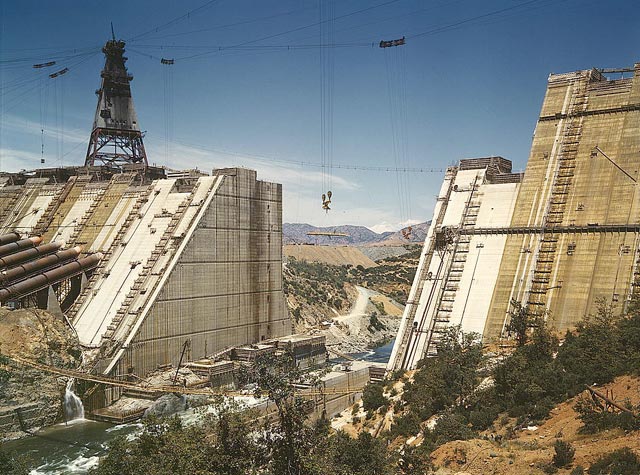
construction on the Shasta Dam was completed (1945)

the Bretton Woods Agreement (1944) established the International Monetary
Fund, the World Bank as well as the General Agreement on Tariffs and Trade
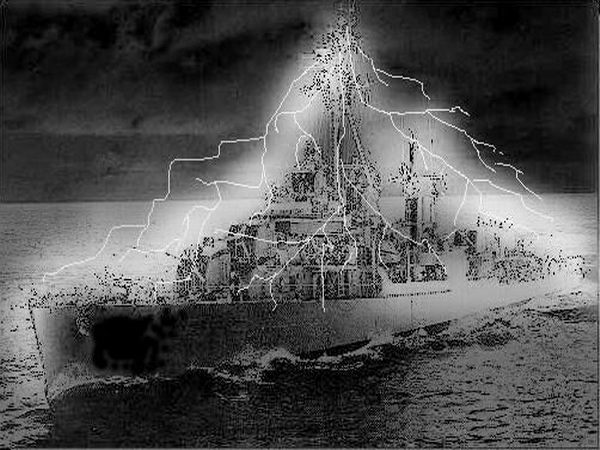
the philadelphia experiment (October 28, 1943)

the world's first artificial self-sustaining nuclear chain reaction ( December 2, 1942)
took place in the world's first nuclear reactor, Chicago Pile Number One

the Grand Coulee Dam (1941)
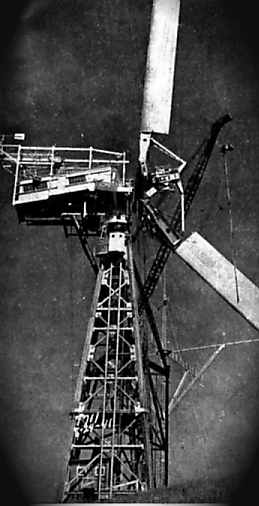
the world's first megawatt-size wind turbine (1941) was connected to
the local electrical distribution system on Grandpa's Knob in Vermont, USA.
the first offshore oilrig was built off the coast of Terrebonne Parish in the (1940s)
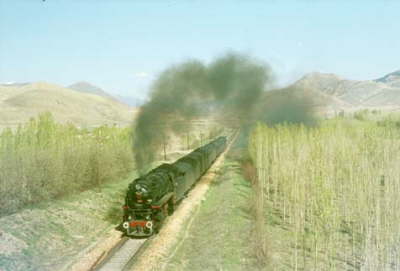
the Baghdad Railway (July 15, 1940)
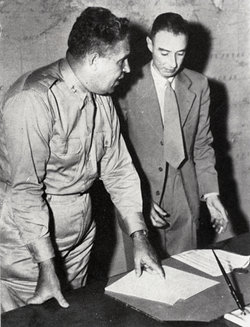
the Manhattan Project (1939)
Mexico nationalized its petroleum reserves (March 1938) and expropriated the major foreign oil companies
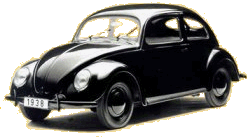
VW Käfer (1938)
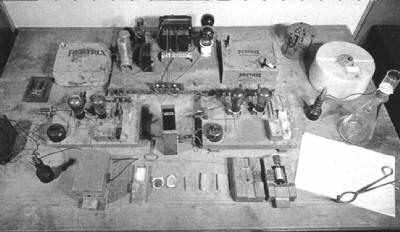
Otto Hahn and Fritz Straßmann succeeded (1938) to split the nucleus of a uranium atom
on a simple wooden experimenting table, in the first instance of induced Nuclear fission

the crash of the LZ129 Hindenburg (May 6, 1937) at Lakehurst temporarily closed the chapter of these enormous rigid airships

construction was completed on the Hoover Dam (March 1, 1936)
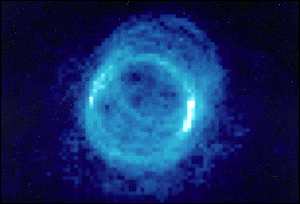
Cherenkov radiation (1934) was discovered
the largest oil field in the world up to that time (October 3, 1930)
was discovered by Columbus Marion Joiner in Rusk County, East Texas
Fortune magazine (1930)
Standard Oil and IG Farben (November 9, 1929) signed a cartel agreement

the Great Depression (1929-1939)
the Wall Street Crash (October 24-October 29, 1929)
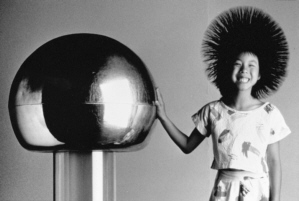
the Van de Graaff generator (October 1929)
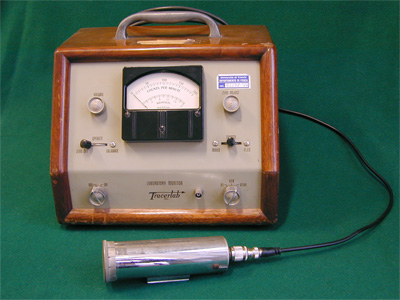
the Geiger counter (1928)

Oil was discovered at Kirkuk in Iraq (October 15, 1927)
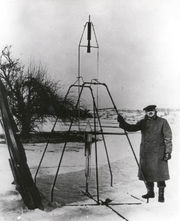
the first liquid-fueled rocket was launched (March 16, 1926) by Robert H. Goddard at Auburn, Massachusetts

IG Farben (1926)
Union Banking Corporation (1924-1942)
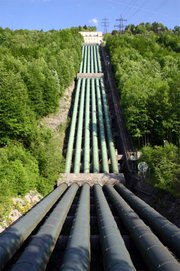
das Kraftwerk Walchensee (1924)
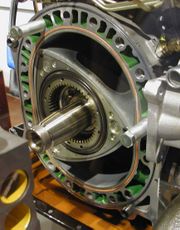
the Wankel engine (1924)
Compagnie Française des Pétroles (1924) was founded and renamed Total in 1954
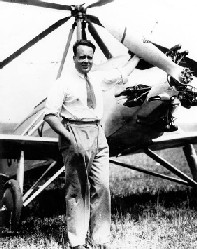
the Autogiro (1923) was the predecessor to the helicopter
that leaded gasoline (1921) prevented internal combustion engines
from "knocking" was discovered by Thomas Midgley, Jr.
dishwashers (1920s) started to be equipped with permanent plumbing
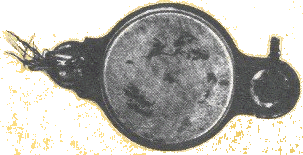
the Moray Valve (1920s)

International Labour Organization (1919)
Halliburton Energy Services (1919)
Hertz (1918)
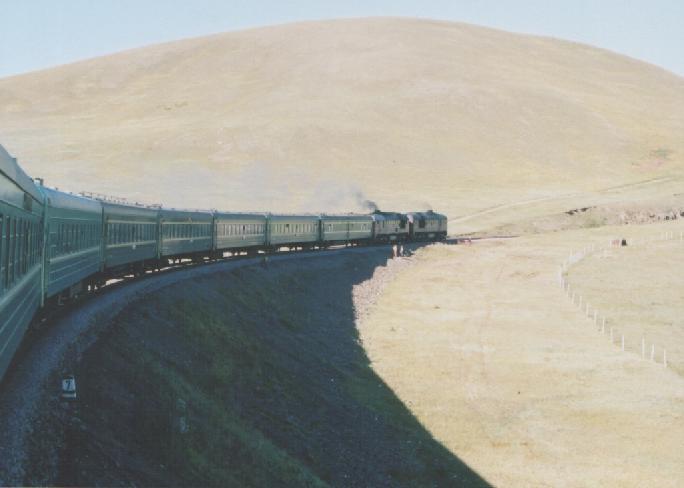
the Trans-Siberian Railway (October 1916)

the Panama Canal (August 15, 1914) is 82 kilometres long
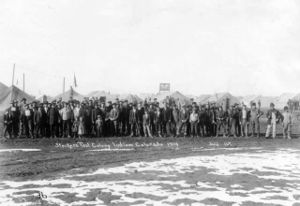
the Ludlow Massacre (April 20, 1914) was one of the bloodiest assaults on organized labor in
American history. It took place in Ludlow, Colorado northwest of Trinidad, Colorado and was
the climax of an effort to suppress a strike by twelve thousand Colorado coal miners
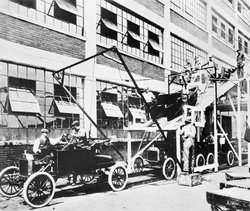
Henry Ford installed the World's first moving assembly line (December 1, 1913)
reducing the time it took to build a car from 12.5 hours to 1.5 hours

the Kaplan turbine (1913)
cosmic rays (1912) were discovered by Victor Hess

Titanic (April 14, 1912)

Surface mining (1912)
the all-electric starting, ignition and lighting system for automobiles (1912) was invented by Charles Franklin Kettering
the Seven Sisters (1911)
the Supreme Court broke up Standard Oil (1911) into 34 companies. Two of these companies were Jersey Standard,
which eventually became Exxon, and Socony ("Standard Oil Company of New York"), which eventually became Mobil.
Other ones were Standard Oil of California - or Socal - renamed Chevron, and Standard Oil of Indiana, renamed Amoco
Charles Proteus Steinmetz warned in "Future of Electricity" (1910) about air pollution
from buring coal and water pollution from uncontrolled sewage disposal into rivers
Freeze drying (1909)
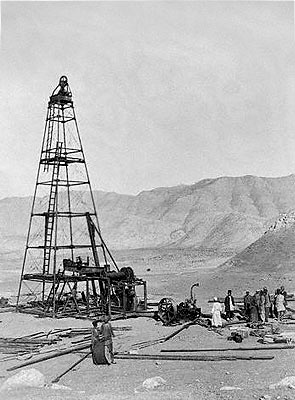
the Anglo-Iranian Oil Company (1909) renamed itself BP in 1954.
The company merged with the American Oil Company (Amoco) in 1998

Model T (1908)
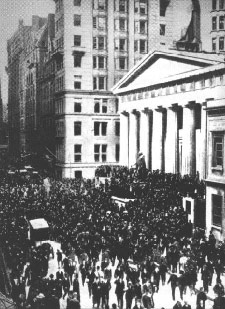
the Panic of (1907) prompted the United States Congress to form the Federal Reserve System
the first gas station in North America was built (1907) by Standard Oil of California
in Seattle, Washington. Early on, they were known to motorists as "filling stations"
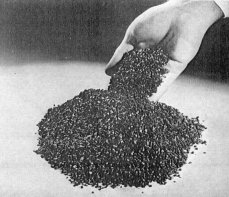
the first plastic based on a synthetic polymer was called Bakelite (1907) and was created by Leo Hendrik Baekeland

the Royal Dutch/Shell Group was created (February 1907) when the Royal Dutch Petroleum Company and the
"Shell" Transport and Trading Company Ltd merged their operations to compete against the then-giant American
oil company, Standard Oil. Royal Dutch Petroleum Company was a Dutch company founded in 1890
the triode vacuum tube (1907) was invented by Lee De Forest
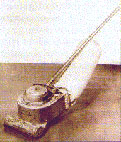
the electric vacuum cleaner (1906) was invented by James Murray Spangler
the International Electrotechnical Commission (June 26, 1906)
electric tumble dryers appeared in the (20th century)
electric washing machines (1906) started to be mass produced
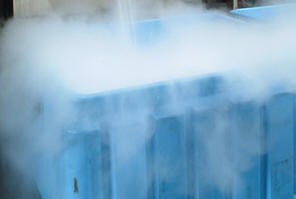
the third law of thermodynamics (1906) was presented by Walther Nernst. It states that: as a
system approaches absolute zero of temperature all processes cease and the entropy of the
system approaches a minimum value or zero for the case of a perfect crystalline substance
Rolls-Royce (1906)

the toaster (1905) was the first popular electrical appliance
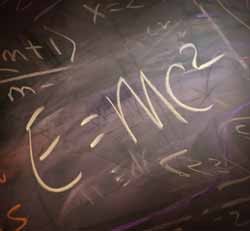
the Annus Mirabilis Papers (1905)
John Fleming developed the first vacuum tube (1904)
the Fédération Internationale de l'Automobile (June 20, 1904)
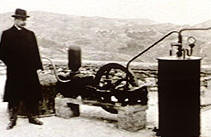
geothermal-generated electricity (1904) was first produced at Larderello, Italy

the electrical power plug (1904) was invented by Harvey Hubbell
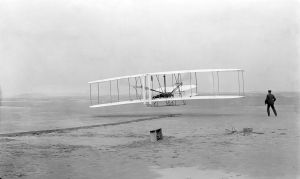
the Wright brothers (December 17, 1903) flew their glider with a 12-horsepower engine for 59 seconds,
in what the Fédération Aéronautique Internationale today recognizes as being the first controlled,
powered, sustained flight involving a heavier-than-air vehicle, using mechanically unassisted takeoff

the Tsiolkovsky rocket equation (1903)
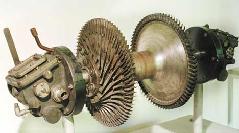
the Gas turbine (1903)
flint used in lighters (1903) was discovered by Carl Auer von Welsbach
the first modern, electrical air conditioning was invented (1902) by Willis Haviland Carrier
the United States Steel Corporation (1901) was the world's first billion-dollar corporation

the first Zeppelin flight occurred on (July 2, 1900) over Lake Constance
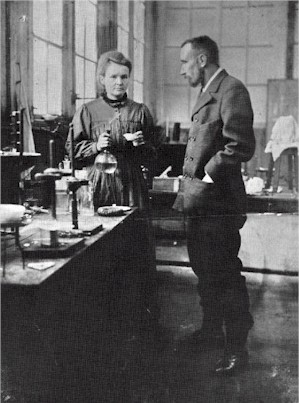
following Becquerel's discovery (1898) the French physicists Marie and Pierre Curie found other substances that emitted radioactivity
Oldsmobile (1897)

the electron (1897) was discovered as a a subatomic particle by Joseph John Thomson. As a unit
of charge in electrochemistry the electron was posited by G. Johnstone Stoney already in 1874
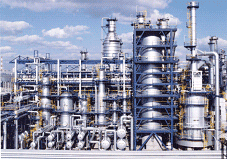
the hydrogenation process (1897) was discovered by Paul Sabatier
the Dow Jones Industrial Average (May 26, 1896)
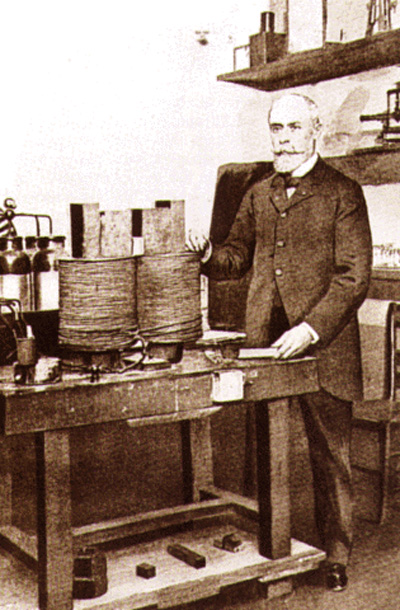
Radioactivity was first discovered (1896) by the French scientist Henri Becquerel while working on phosphorescent materials
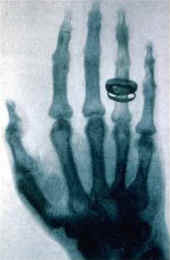
Wilhelm Conrad Röntgen began observing and further documenting X-rays (November 8, 1895) while
experimenting with vacuum tubes. Othe important early researchers in X-rays were Ivan Pului, Sir William
Crookes, Johann Wilhelm Hittorf, Eugen Goldstein, Heinrich Hertz, Philipp Lenard, Hermann von Helmholtz,
Nikola Tesla, Thomas Edison, Charles Glover Barkla and Max von Laue

the first motorized bus in history (1895) was a Benz truck modified by Netphener company
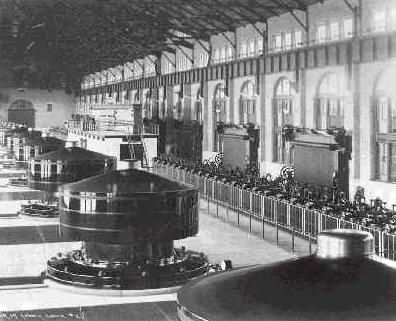
Westinghouse Electric Company’s hydraulic electric generators at Niagara Falls (1895) began producing
electricity for Buffalo, NY. The generators were the largest generators in the world at the time and
produced alternating current of, 3750 kilowatts at 25 Hz sending it 35 km (22 miles) away
cruise ship (late 19th century)
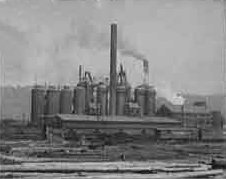
the Carnegie Steel Company (1892)
the diesel engine (1892)
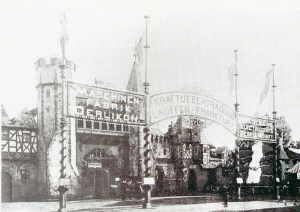
the first transmission of three-phase alternating current using high voltage (1891) took place on the occasion of the
international electricity exhibition in Frankfurt. In that year, a 25 kV transmission line, approximately 175 kilometres
long, was built between Lauffen at the Neckar and Frankfurt.
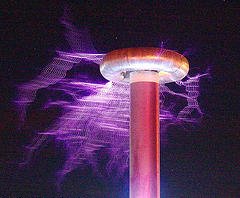
the Tesla coil (1891)
the Standard trust dodged the legal assault (July 14, 1891) of the Sherman Antitrust Act by forming a "separate"
corporation, the Union Tank Line Company, dedicated to transportation. Though Union Tank Line was now
technically independent, it was still owned by Standard Oil and served only the company's refineries

the Sherman Anti-Trust Act (1890)

the first time clock was invented (November 20, 1888) by Willard Bundy, a jeweler in Auburn, New York

three-phase power (1888) was invented by Nikola Tesla
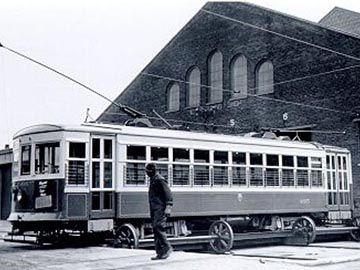
electric traction (1887) was invented by Frank J. Sprague
Westinghouse Electric Corporation (1886)
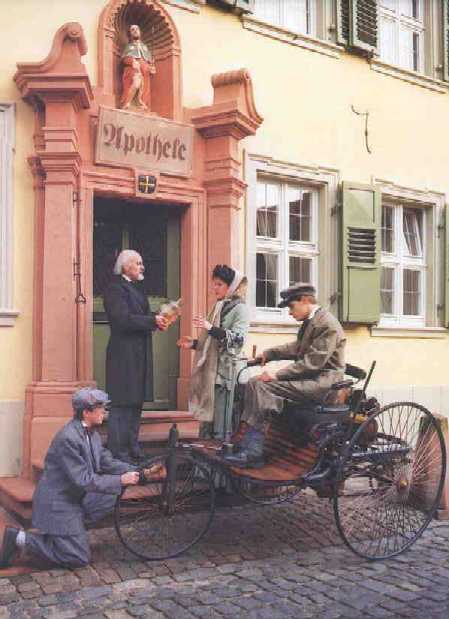
the crude gas-fueled car (January 29, 1886) was patented by Karl Benz

the Reitwagen (1885) was developed bx Maibach and Daimler
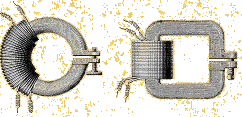
the induction coil (1885) was built by William Stanley based on Lucien Gaulard and John Gibbs' idea
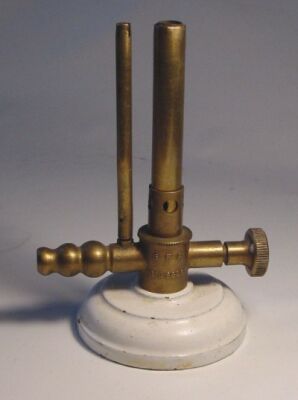
the Bunsen burner (1885)

the Socialist International (1884)
the modern steam turbine (1884) was invented by Charles A. Parsons
the prototype of all modern petrol-engines (1883) consisting in a reduced size
single-horizontal Four-Stroked cylinder was developed by Daimler and Maybach
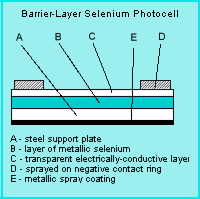
the first solar cell (1883) was built by Charles Fritts

the induction motor (1882) was designed by Nikola Tesla
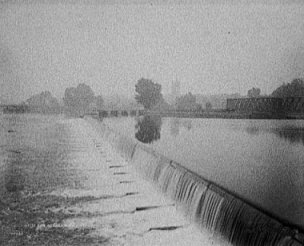
the first commercial hydroelectric power plant (September 30, 1882) went into operation in Appleton,
Wisconsin, on the Fox River in Appleton, Wisconsin. A 107-cm (42-inch) waterwheel
powered two direct current generators that provided a total of 25 kilowatts of power
John D. Rockefeller reorganized his oil holdings (January 2, 1882) as the Standard Oil trust

Coal-cutting machines became available (1880s) prior to that, coal was mined underground by hand
Wiring safety codes (1880s)

the first practical power transformer (1880) was developed by Lucien Gaulard and John Gibbs
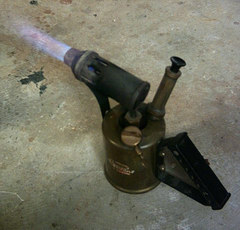
the blowtorch (1880) was invented by Carl Rickard Nyberg
Pierre Curie and Jacques Curie predicted and demonstrated piezoelectricity (1880) when they showed that crystals
of tourmaline, quartz, topaz, cane sugar, and Rochelle salt generate electrical polarization from mechanical stress

the first public demonstration of the incandescent light bulb (December 31, 1879) was given by Thomas Edison
in Menlo Park On January 27, 1880, he filed a patent in the United States for the electric incandescent lamp.

General Electric (1879)

Porfirio Diaz expropriated more than 95 percent of rural Mexican families (1877-1911) during his dictatorship
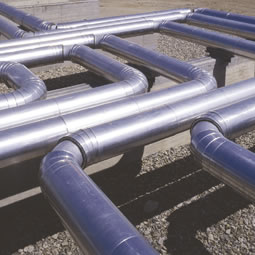
the first commercially successful district heating system (1877) was launched in Lockport, N.Y.
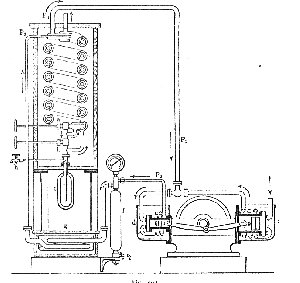
the refrigerator (1876) was invented by Carl von Linde
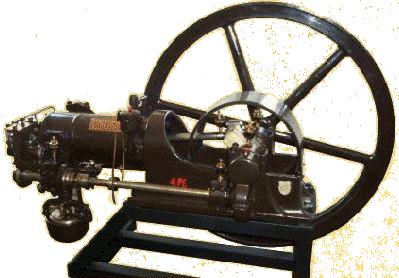
the Four-Stroke-Compression system (1876) was patented to Nikolaus August Otto

the second law of thermodynamics (1874) was formally stated by Lord Kelvin
Rockefeller acquired the oil interests of Charles Pratt and Company (1874)
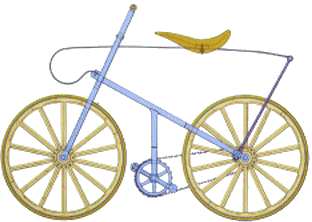
the first bicycle with a chain was made (1874) by HJ Lawson
the principle of operation of thermionic diodes (1873) was discovered by Frederick Guthrie

Maxwell's Treatise on Electricity and Magnetism (1873)

the Union Tank Car Company (1873) was purchased by Standard Oil
the wind tunnel (1871) was invented by Frank H. Wenham
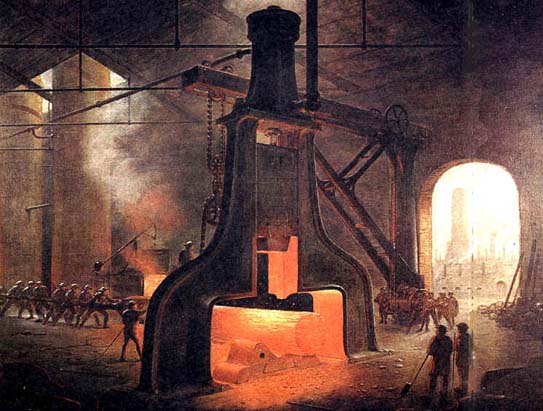
the Second Industrial Revolution (1871-1914) was about the development of heavy industries such as steel,
chemicals, and petroleum. Its power sources were electricity, the internal combustion engine, and the gas turbine

Standard Oil (1870)
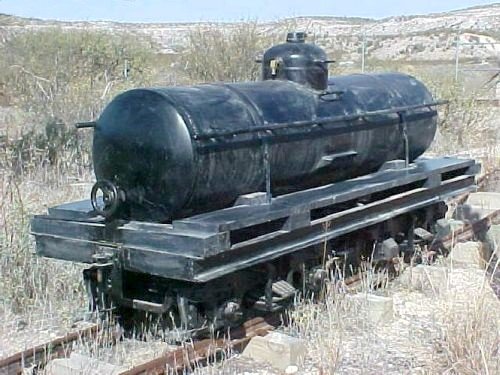
Rockefeller invented the all-metal sealed oil tanker railroad car (1869) and held the patent to it secretly. He then only leased the cars,
never sold them to the producers and refiners. He let them invest their capital to build the refineries and oil wells, then he would break the
lease on the tanker cars, and within months the oil producer and the refiner, after making large investments, were now on the verge of
bankruptcy. Then John Rockefeller, through his holding company, Standard Oil, simply walked in and purchased both the oil fields and the
refinery at pennies on the dollar. Using this technique, he controlled 80% of the transportation and refining/production in the US, in under 10 years
the first oil tanker was the "Charles" of Antwerp, Belgium (July 30, 1869) which carried oil from
the U.S. to Europe from 1869 to1872. The ship had 59 iron tanks arranged in rows in the ballast
and below the deck, with a bulk capacity of 7,000 barrels of oil
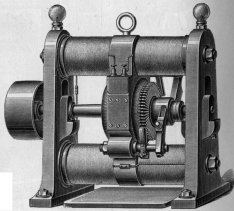
the Gramme dynamo (1869)
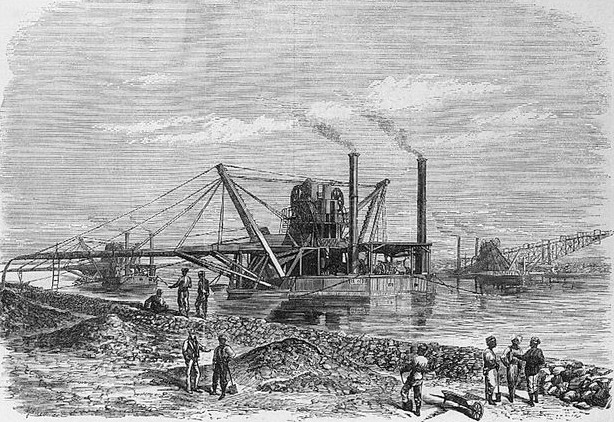
the Suez canal (November 17, 1869) links the Mediterranean Sea to the Gulf of Suez on the Red Sea
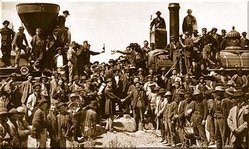
the First Transcontinental Railroad (May 10, 1869) was built across North America

Celluloid, the first entirely synthetic plastic (1869) was invented by American John W. Hyatt
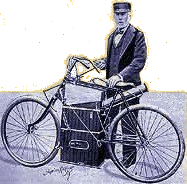
the Roper machine (1867)
the Leclanché cell (1866) was the forerunner of the modern dry cell battery
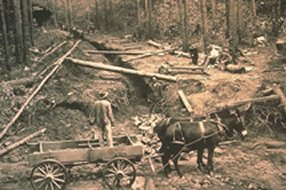
the first major oil pipeline (October 9, 1865) to successfully transport crude petroleum was completed
by Samuel Van Syckel of Titusville, Pa. It was about five miles long. Wrought iron pipes, 2-inches in
diameter, were laid underground in 15-foot sections. Two pumping stations supplied the power
Maxwell's equations (1864)

the Tube (1863)
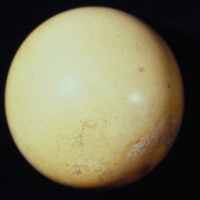
Parkesine (1862) is the trademark for the first man-made plastic
the Four-Stroke-Compression system (1862) was patented to Alphonse Beau de Rochas in France
the Four-Stroke-Compression system (1860) was developed by Nikolaus
August Otto based on the engine invented by Etienne Lenoir
the earliest known record of the direct conversion of solar radiation into mechanical power (1860) belongs to Auguste Mouchout.
By the following year he was granted the first patent for a motor running on solar power and continued to improve his design until
about 1880. During this period the inventor laid the foundation for our modern understanding of converting solar radiation into
mechanical steam power. Mouchout's initial experiments involved a glass-enclosed iron cauldron: incoming solar radiation passed
through the glass cover, and the trapped rays transmitted heat to the water. While this simple arrangement boiled water, it was of little
practical value because the quantities and pressures of steam it produced were minimal. However, Mouchout soon discovered
that by adding a reflector to concentrate additional radiation onto the cauldron, he could generate more steam. In late 1865,
he succeeded in using his apparatus to operate a small, conventional steam engine

William John Rankine (1859) wrote "Manual of the steam engine and other prime movers," introducing
engineers to thermodynamics and the Rankine Cycle. He coined most of the terms used today in energy production
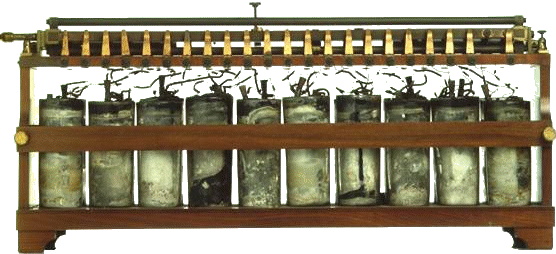
the first lead-acid storage battery (1859) which produced electricity from
a chemical reaction and could be recharged, was invented by Gaston Planté
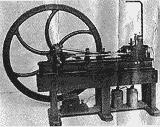
the first internal combustion engine (1859) a single-cylinder, two-stroke engine
with electric ignition of illumination gas, was developed by Etienne Lenoir

Edwin Drake (August 27, 1859) drilled the first oil well in the United States, near Titusville, Pennsylvania
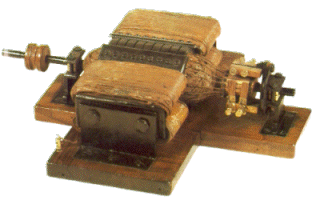
the shuttle windings for the armature of the electric generator (1857) were designed by Werner von Siemens.
This was a major step toward the development of electrical generators without permanent magnets
the Siemens regenerative furnace (1856)
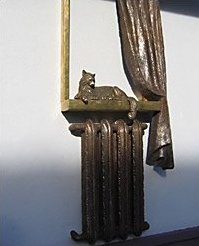
the radiator (1855) was invented by Franz SanGalli, an Italian-born German living in Russia. He
was the first to produce a system of central heating and patented his invention in Germany and the US

the Bessemer process (1855) for producing inexpensive steel in a blast furnace was introduced by Henry Bessemer
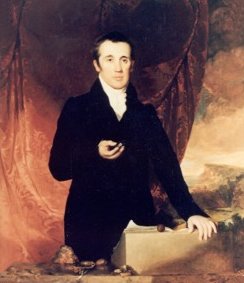
Benjamin Silliman of New Haven, Conn. (1855) obtained several patents by distilling oil
into a number of products. These included tar, naphthalene, gasoline and solvents
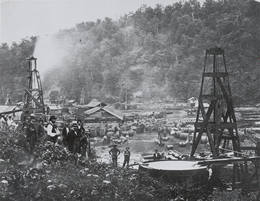
the Pennsylvania Rock Oil Company (December 30, 1854) was incorporated in New York
by George H. Bissell of New Haven, Conn. This made it the first oil company to be created

the earliest recorded manned, heavier-than-air flight (1853) occurred
when George Cayley persuaded his coachman to fly one of his gliders
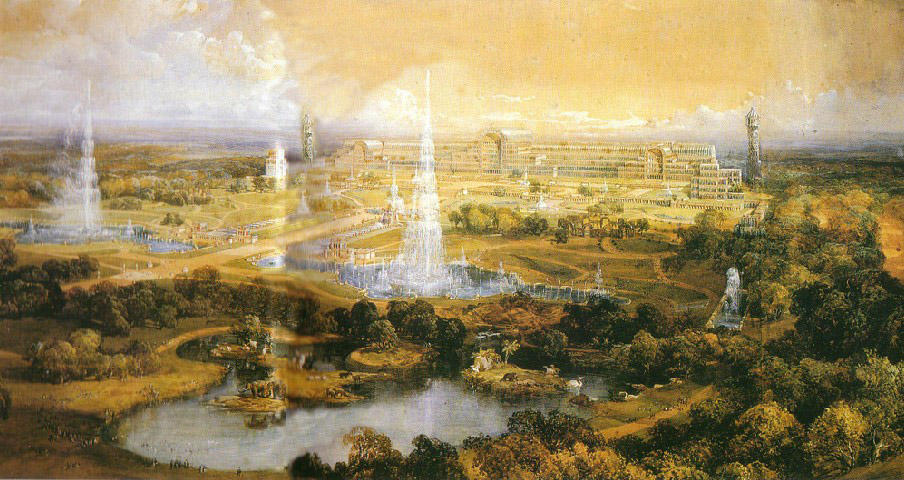
World's Fairs (1851)
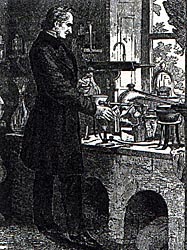
nitrogen-based fertilizer (1849) was invented by Justus von Liebig
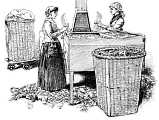
wood pulp (1848) for papermaking was invented by Friedrich Gottlob Keller. Further
experimentation by American chemist C.B. Tilghman and Swedish inventor C.F. Dahl
enabled the manufacture of wood pulp using chemicals to break down the fibres

the Chicago Board of Trade (1848) is the world's oldest futures and options exchange

the Communist Manifesto was first published on (February 21, 1848)

the first law of thermodynamics (1847) was published as a definitive statement of the conservation of energy by Hermann von Helmholtz

Kerosene was first refined from coal (1846) by Abraham Gesner
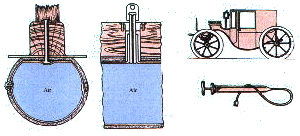
the first pneumatic tire (1845) was patented by Robert William Thomson as the Aerial Wheel. This invention consisted of a canvas inner
tube surrounded by a leather outer tire. The tire gave a good ride, but there were so many manufacturing and fitting problems that the idea
had to be abandoned. John Dunlop re-invented the tire for his ten year old son's tricycle in 1887 and was awarded a patent for his tire in
1888. Dunlop's tire had a modified leather hosepipe as an inner tube and rubber treads
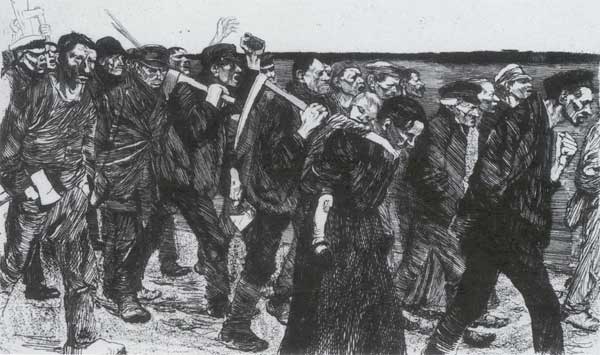
der Weberaufstand (1844)

Joule's law (1840)
Imperialism (1840-present)
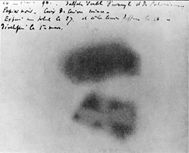
the photovoltaic effect was discovered (1839) by French experimental physicist Alexandre-Edmond Becquerel
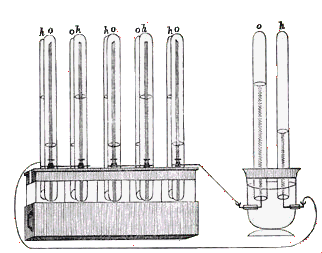
the fuel cell (1839) was developed by William Robert Grove
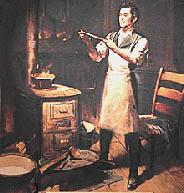
the vulcanization of rubber (1839) was discovered by Charles Goodyear

the rear-wheel driven bicycle (1839) was developed by Kirkpatrick MacMillan
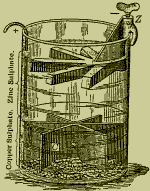
the Daniell cell (1836) the first reliable source of electric current, using the
interaction of copper and zinc, was invented by John Frederic Daniell

the electrical relay (1835) which enables a current to travel
long distances from its origin was invented by Joseph Henry
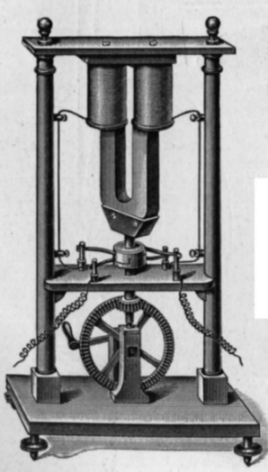
the dynamo (1832) was built by Hippolyte Pixii based on Faraday's principles
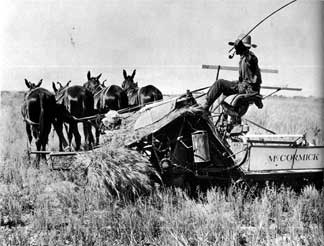
the mechanical reaper (1831) was developed by Cyrus McCormick
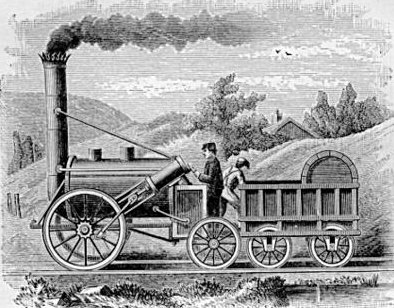
the Rocket (1829) invented by George Stephenson was the first 'modern' locomotive, introducing
several innovations that have been used on almost every steam locomotive built ever since

Gaspard-Gustave Coriolis (1829) published "Du Calcul de l'effet des machines" outlining the mathematics of kinetic energy
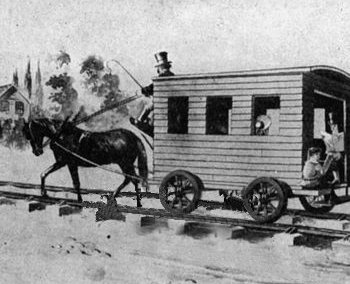
the first trams, known as streetcars in north America (1828) were pulled by horses

the first statement of Ohm’s law (1827) that the current of electricity is equal to the ratio of the voltage
to the resistance, appeared in Georg Simon Ohm`s "The galvanic circuit investigated mathematically"
the friction match (1827) was invented by chemist John Walker
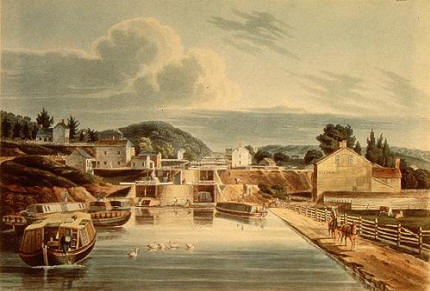
the Erie Canal (October 26, 1825) was opened

the selfactor (1825) was patented by Richard Roberts
the Electromagnet (1824) was invented by William Sturgeon
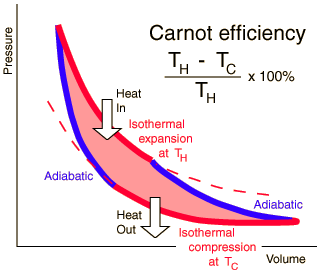
Reflexions sur la puissance motrice du feu (1824) by Nicholas Carnot showed that work is done as heat passes from
a high temperature to a low one. His theoretical account defined work and hinted at the second law of thermodynamics

pyroelectricity (1824) was named by David Brewster
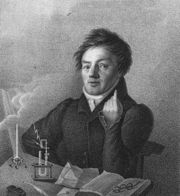
the lighter (1823) was invented by Johann Wolfgang Döbereiner
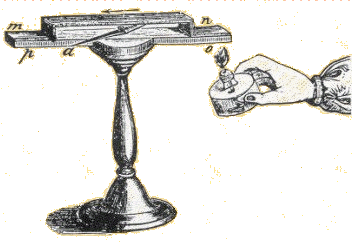
the Seebeck effect was first discovered (1821) accidentally, by the Estonian physicist Thomas Johann Seebeck,
who found that a voltage existed between two ends of a metal bar when a temperature gradient existed in the bar
the first electric motor (1821) was built by Michael Faraday
the Galvanometer (1820)
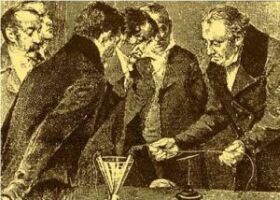
the relationship between electricity and magnetism (April 1820)
was discovered by Hans Christian Ørsted
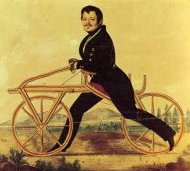
the velocipede (June 12, 1817) was invented by Karl Drais
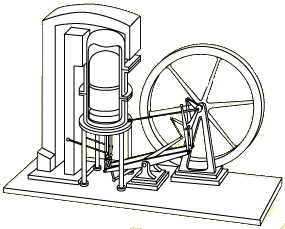
the Stirling engine (1816) was patented after the Scottish clergyman Rev. Robert
Stirling made significant improvements to earlier designs by Sir George Caley

the Davy lamp (1815)
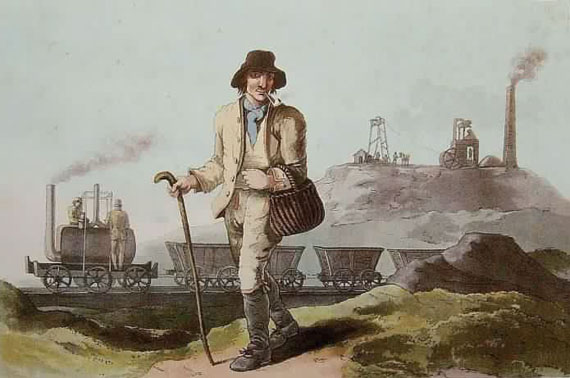
the first commerically successful steam locomotive (August 12, 1812) was built by John Blenkinsop, owner of
the Middleton Colliery, who teamed up with Matthew Murray to build a steam-operated railway to transport
coal about 3 miles to Leeds. It could haul as many as 30 loaded coal cars at a speed of 3 mph
the Luddite movement (1811-1830)
canned food (1810)

the ultraviolet part of the electromagnetic spectrum (1802) was discovered by Johann Wilhelm Ritter
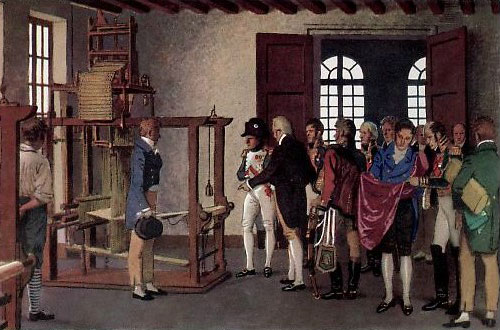
the Jacquard loom (1801)

the steam locomotive (1801) was invented by Richard Trevithick
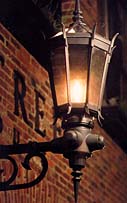
Gas obtained from carbonized coal, known as town gas (1800s) became the
primary fuel for illuminating streets and houses throughout much of Europe
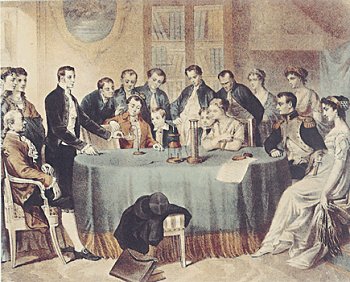
the voltaic pile, a forerunner of the electric battery (1800) was developed by Alessandro Volta

electrolysis (1800) was discovered by William Nicholson
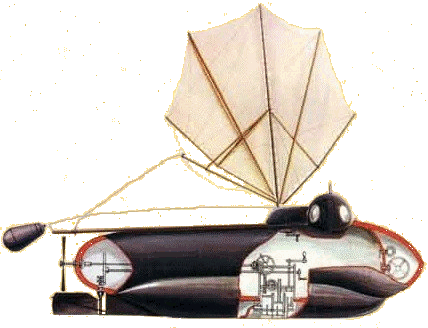
the Nautilus (1800) was the first practical submarine
a continuous paper making machine (1799) was invented by Nicholas Louis Robert
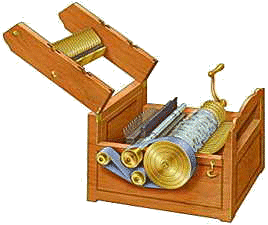
the cotton gin (1793) was built by Eli Whitney

Samuel Slater (1793) began the American Industrial Revolution
with the construction of the first successful textile mill

outside of 68 Wall Street (May 17, 1792) the Buttonwood Agreement,
which established the NYSE, was signed by twenty-four stock brokers
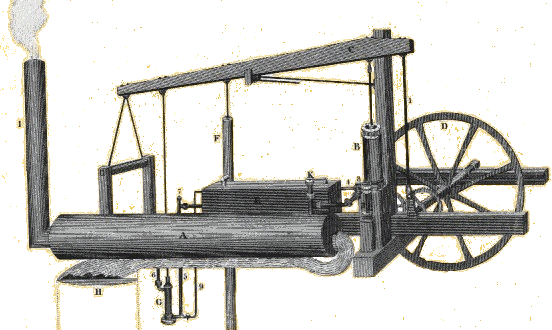
the high-pressure steam engine (1790s) was improved by Oliver Evans
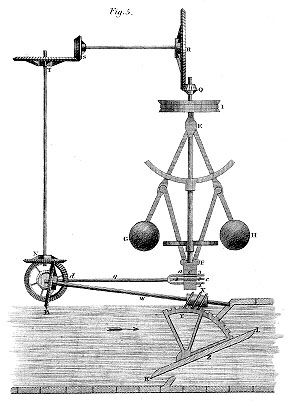
the Watt Governor (1788)
one of the first steam powered ships (1786) was built by John Fitch. The first successful
trial run of his steamboat was made on the Delaware River on August 22, 1787
Charles-Augustin de Coulomb (1785) presented his three reports on Electricity and Magnetism
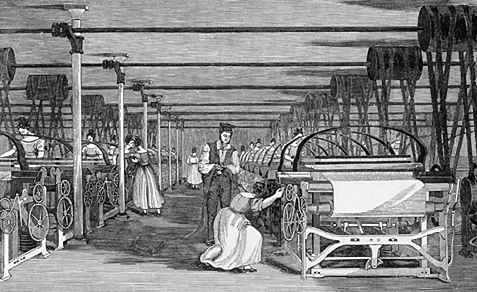
the power loom (1785) was built by Edmund Cartwright

the puddling furnace (1784) was patented by Henry Cort
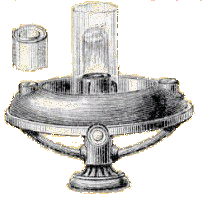
Aimé Argand (1784) patented the first really bright lamp, which burns oil in a wick between
two concentric tubes, producing a circular flame with two sources of oxygen; a glass chimney
provided a constant airflow as it protects he flame from irregular breezes

William Murdoch (1784) built a prototype steam locomotive

the first steamboat propelled by paddle wheels was the Pyroscaphe (1783) built by Marquis Claude de Jouffroy
of Lyons in France. On July 15, 1783 it steamed successfully up the Saône for fifteen minutes before the engine
failed. Political events interrupted further development
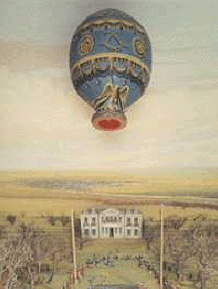
Joseph-Michel and Jacques-Etienne Montgolfier (June 5, 1783) as a first public demonstration, sent up at Annonay a 900 m³
linen bag inflated with hot air. Its flight covered 2 km, lasted 10 minutes, and had an estimated altitude of 1600 - 2000 m
horsepower (1782)

bioelectricity (1780) was discovered by Luigi Galvani
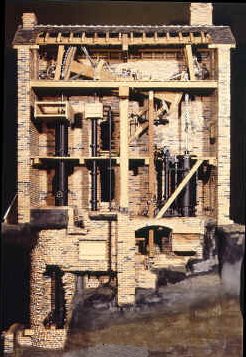
the Smethwick engine (May 1779) was built by James Watt and Matthew Boulton
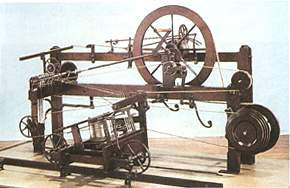
the spinning mule (1778) was developed by Samuel Crompton, combining the spinning jenny with Richard Arkwright's spinning frame

Honoré Blanc began producing some of the first firearms with interchangeable parts (1778) Thomas Jefferson
saw a demonstration in 1785 and took the idea back to the United States, where Eli Whitney and other
inventors moved the concept forward when he introduced the American System of manufacturing in 1799
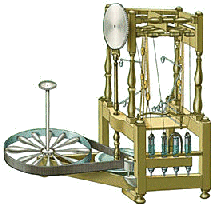
Richard Arkwright installed the water frame (1771) in his cotton mill at Cromford,
on the River Derwent, creating one of the first factories that were specifically built to
house machinery, rather than just bringing workers together

the quadrant electrometer (1770) was a considerable improvement on John Canton’s invention of 1953
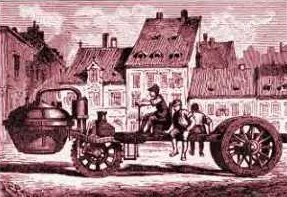
Nicolas-Joseph Cugnot, French military engineer (1769) designed and built the world's first
true automobile, a huge, heavy, steam-powered tricycle initially built for hauling artillery

Horace-Bénédict de Saussure (1767) constructed the first known Western solar oven
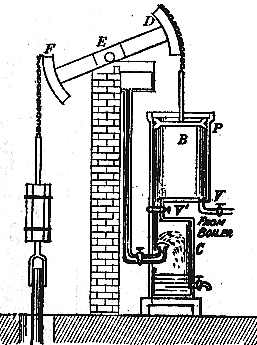
the Watt steam engine (1765)
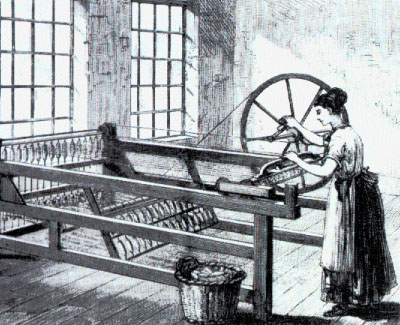
the spinning jenny (1764) was invented by James Hargreaves

Benjamin Franklin (June 15, 1752) conducted his famous kite experiment that led him to develop
many of the terms that we still use today when we talk about electricity: battery, conductor, condenser,
charge, discharge, uncharged, negative, minus, plus, electric shock, and electrician
Benjamin Franklin (1747) described in a letter his discovery that a pointed conductor can draw off electric
charge from a charge body. This was the basis for Franklin’s lightning
rod, even before Franklin proved the
connection between electricity and lightning. Fraklin installs a lighting rod on his home in 1749

the lead chamber process (1746) was invented by John Roebuck
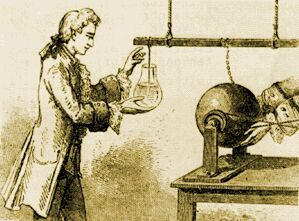
the Leyden jar, the first practical way to store static electricity (January 1746) was invented
at the same time but independently by Pieter van Musschenborek and by Edwald Georg von Kleist
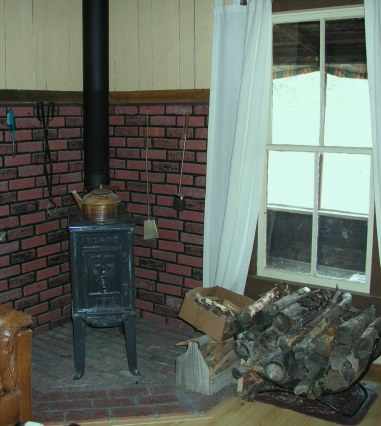
the Franklin Stove (1742)
C. F. du Fay discovered the existence of two types of electricity (1733) and named them
"vitreous" and "resinous" (later known as positive and negative charge respectively.)

the flying shuttle (1733) was invented by John Kay

the Industrial Revolution (1712 - present)

the steam engine (1712) was reinvented by Thomas Newcomen
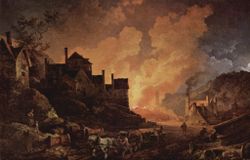
Abraham Darby (1709) set up a coke-fired blast furnace to produce cast iron. The ensuing
availability of inexpensive iron was one of the factors leading to the European industrial revolution
F. Hawksbee (1709) improved the design of Newtons electrostatic generator
by using a metal chain to capture the electricity generated by friction

Thomas Savery patented “the Miner’s Friend” (1698) a machine that pumped out
water from coal mines; it became the first practical machine powered by steam

French physicist Denis Papin, with the help of Gottfried Leibniz (1687) built a working model of a steam engine and a paddle steam boat

Newton's laws of motion were first published (1687) in his work "Philosophiae Naturalis Principia Mathematica"

Otto von Guericke (1663) invented the first electrostatic generator, the "Elektrisiermaschine," using a rotating sulphur
globe rubbed by hand. Isaac Newton suggested the use of a glass globe instead of a sulphur one (Optics, 8th Query)
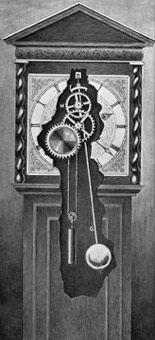
the pendulum clock (1656) was patented to Christiaan Huygens
Giovanni Branca (1629) in his book Le machine described a steam turbine in which steam is directed at vanes on a wheel
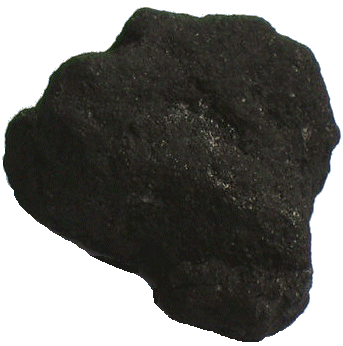
Hugh Platt discoverd coke (1603) a charcoal-like substance produced by heating coal
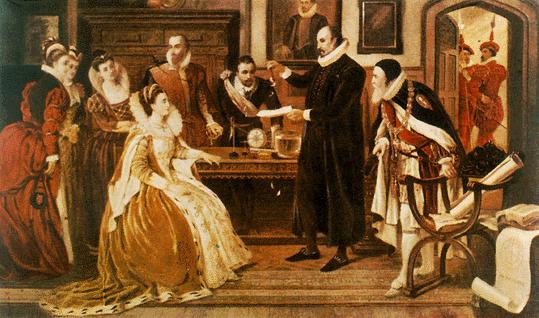
the English scientist William Gilbert (1600) coined the modern Latin word electricus from ηλεκτρον (elektron),
the Greek word for "amber", which soon gave rise to the English words electric and electricity, in his work "De Magnete"
Expropriations (16th century)

wooden rails, the forerunner of train tracks (1550) were invented by German miners

Italian physician Girolamo Cardano (1550) distinguished, perhaps for the
first time, between electrical and magnetic forces in his book "De Subtilitate"

the stagecoach (16th century)
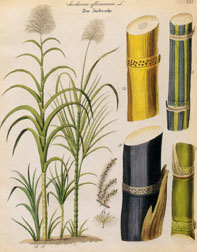
the Spanish began cultivating sugar-cane in the West Indies (1506)

the triangular Atlantic trade (1500-1808) was probably the most important and profitable trading route in the world.
Ships from Europe would carry a cargo of manufactured trade goods to Africa. They would exchange the trade goods
for slaves which they would transport to the Americas. In the Americas, they would sell the slaves and pick up a cargo
of agricultural products, often produced with slave labor, for Europe

Colonialism (1492)

Johann Gutenberg (re)invented the printing press (1455)
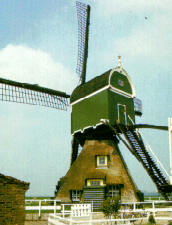
the Dutch invented the wipmolen (1450) a form of windmill in which
the top portion, bearing the sails, can be turned to face the wind
Absolutism (1385-1800)

blast furnaces (1200)
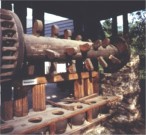
the camshaft (12th century)

Köhler (Middle Ages)
![]()
coal (1000) started to be mined in Britain

carriages (Middle Ages)
the streets of the newly constructed Baghdad (8th century) were paved with tar

the Horse collar (8th century)
the Magic wheel (8th century)
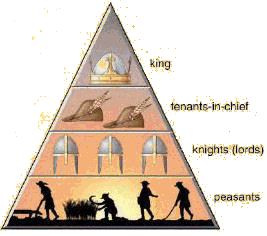
Feudalism (Middle Ages)
the first oil wells (4th century) were drilled in China

the Stirrup (4th century)
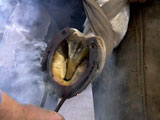
the Horseshoe (3rd century)
the Baghdad Battery (200)
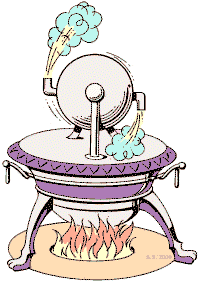
the first steam engine (10-70) was invented by Heron of Alexandria
water wheels (50 bc)

the Dendera light (1st century bc)
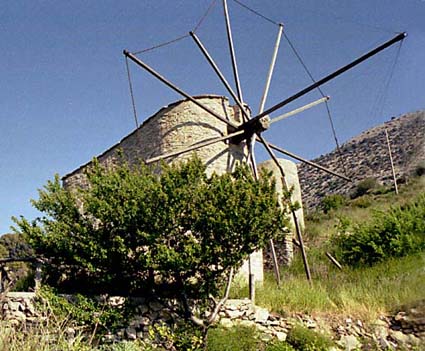
windmills (7th century bc)
Slavery (prehistoric times - present)

controlled fire (1,000,000 bc)
the greatest coal and oil-forming time in geologic history was during the Carboniferous era (345-280 million years bc)
further large deposits of coal are found in the Permian, with lesser but still significant Triassic and Jurassic deposits,
and minor Cretaceous and younger deposits of lignite

Sexual reproduction (1,200,000,000 bc) evolved and led to an explosion in the rate of evolution

the Oxygen level (1,500,000,000 bc) in the atmosphere reached its present day level and stabilized

Photosynthesizing cyanobacteria (3,000,000,000 bc) evolved, they used
water as reductant, thereby producing oxygen as the waste product

Life (3,800,000,000 bc) appeared on earth for the first time
possibly in the form of self-reproducing RNA molecules
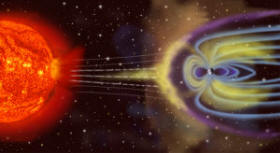
the Earth's Magnetic Field (4,570,000,000 bc)

our Sun (4,600,000,000 bc) and Solar System formed in the Milky Way galaxy. Planet
Earth formed from the accretion disk revolving around the young Sun 4,570,000,000 bc